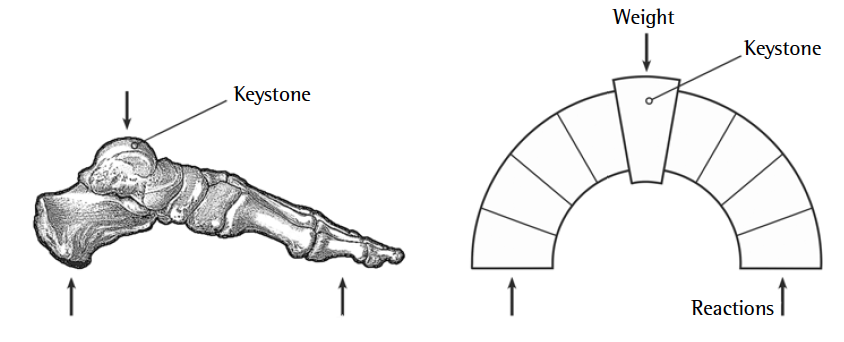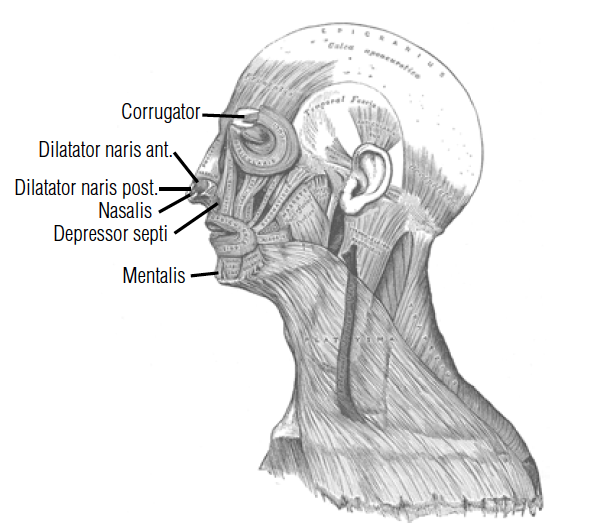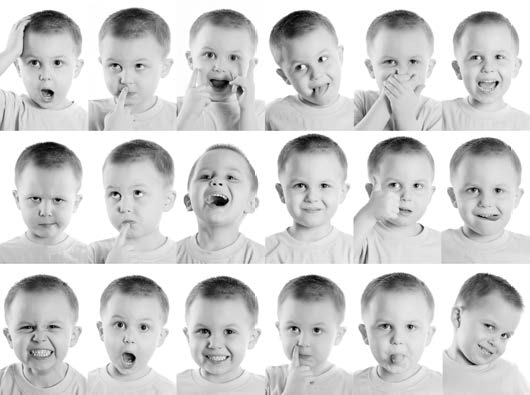
Chapter 29
Design Arguments for God & “Irreducible Complexity”
What Is the Design Argument?
The design argument says that design reveals a designer and the attributes of the designer. In the same way that the intricate design of an aircraft shows the skill and care of a human designer, so the intricate design of creation shows the skill and care of the divine Designer.
There are many verses in the Bible that contain the design argument. The most famous verse is Romans 1:20 which says, “For since the creation of the world His invisible attributes are clearly seen, being understood by the things that are made, even His eternal power and Godhead, so that they are without excuse.” This verse teaches that God’s handiwork in creation is clear for everyone to see and that no one has an excuse not to believe in a Creator.
Another example of the design argument can be found in Hebrews 3:4 where we read, “For every house is built by someone, but He who built all things is God.” In the same way that a house requires intricate design to make it suitable for humans to live in, so the earth requires intricate design to make it fit for human habitation. In fact, Isaiah 45:18 says that God deliberately designed the earth to be inhabited.
The Book of Job contains many verses on the wonder of creation, including the design of fish, birds, animals, dinosaurs, rain, snow, clouds, and the stars. The Book of Job speaks of how creation is so wonderfully designed that it is beyond human comprehension (Job 9:10 and 37:5). The Psalms also give glory to God for His creation. Psalm 139:14 speaks of the wonder of the design of the human body and how God deserves our praise for His workmanship.
Christians have used the design argument in preaching and writing down through the ages. The Apostle Paul used the design argument when he preached to the Athenians in Acts 17. In 1692, the Puritan preacher Thomas Watson used the following design argument in his writing:
If one should go into a far country and see stately edifices he would never imagine that they could build themselves, but that there had been an artificer to raise such goodly structures; so this great fabric of the world could not create itself, it must have some builder or maker, and that is God.1
In 1802, William Paley wrote a famous book called Natural Theology in which he argued that in the same way that a mechanical watch must have a human designer, so the natural world must have a divine Designer. In recent times, creationists have written many books and articles on how creation is wonderfully designed. Creationists have explained how there are specific hallmarks of design, such as irreducible complexity, common design, over-design, and added beauty, which defy evolution. The following sections give a brief introduction to these arguments for design.
Irreducible Complexity
Irreducible complexity is an evidence for design that represents a key scientific test for evolution. Irreducible complexity is the term applied to a structure or mechanism that requires several precise parts to be assembled simultaneously for there to be a useful function for that structure or mechanism. Irreducible complexity cannot be produced by evolution because evolution is restricted to step-by-step change where every change must give a survival advantage. Evolution has no ability to bring about the many precise design changes that are necessary to make the leap from one design concept to another. If there are examples of irreducible complexity in nature, then the theory of evolution absolutely breaks down.
Charles Darwin himself knew full well that irreducible complexity was a key test for evolution. Even though Darwin did not use the term “irreducible complexity,” he said:
If it could be demonstrated that any complex organ existed, which could not possibly have been formed by numerous, successive, slight modifications, my theory would absolutely break down. But I can find out no such case.2
Creation scientists have shown that creation actually does contain many cases of irreducible complexity. In microbiology there are many irreducible structures like the living cell and bacterial flagellum and there are irreducible processes like blood clotting.3 Other examples of irreducible complexity are the eye,4 human knee joint,5 and the upright stature of humans.6 Creationists have also shown how design requires information to be specified and that information must come from an intelligent source.7 It would be fascinating to know if Charles Darwin would still believe his theory of evolution if he were here today and able to see the many case studies of irreducible complexity!
The Irreducible Human Arched Foot
Human feet represent a clear example of irreducible complexity.8 Human feet have a unique arch structure that is completely different from the flat feet of apes. Arched feet are very important for the upright stature of humans because they allow fine control of the position of the body over the feet. When standing upright, a person can maintain balance by adjusting the relative pressures on the heels and balls of the feet.
Human feet have an arch between the heel and the ball of the foot, as shown in figure 1. The equivalent engineering arch is also shown in figure 1. The human foot has 26 precisely shaped bones, together with many ligaments, tendons, and muscles. Several of the bones are wedge-shaped so that a strong arch is formed. There are several parts in the foot that must be in place and correctly designed before the foot can function properly. In other words, the human foot cannot evolve step by step from a non-arched structure like a hand.

Figure 1. The irreducible human arched foot and equivalent man-made arch
It is well known in engineering that an arched structure is an irreducible structure. An arch needs the right components, like a keystone and wedge-shaped blocks, to be in place to work, as shown in figure 1. Since the human foot has parts equivalent to a keystone and wedge-shaped blocks, the human foot must be an irreducible structure. Only an intelligent designer has the ability to think ahead and plan all the features needed to make an arch like the foot.
The arched structure of the human foot is a perfect design for giving humans upright mobility. In contrast to humans, apes have very flexible feet that are effectively a second pair of hands for gripping branches. In consequence, apes have very limited abilities for two-legged standing, walking, and running.
The Fossil Record Confirms Irreducible Complexity
The fossil record confirms the biblical truth that organisms have not gradually evolved step by step. One of the reasons we know that humans have not evolved from a type of ape-like creature is that there has never been a fossil of a foot that is a transitional form between the flat ape foot and the human arched foot. All fossils of so-called ape-men have either fully ape feet or fully human feet, showing that they are either fully ape or fully human, respectively.
The prominent evolutionist Stephen J. Gould has admitted that fossil evidence supports the creation worldview:
The absence of fossil evidence for intermediary stages between major transitions in organic design, indeed our inability, even in our imagination, to construct functional intermediates in many cases, has been a persistent and nagging problem for gradualistic accounts of evolution.9
The human foot is a clear example of a structure where evolutionists cannot imagine what intermediate forms would look like. The reason for this is that there are no physically plausible intermediate structures due to the need for the foot to be assembled simultaneously.
Common Design
Common design is another important evidence for design that is a challenge for evolution. Common design is where the same design solution is used in different situations by a common designer. Human designers often carry out common design because it represents good design practice. For example, a designer will select nuts and bolts as a method for joining parts together in different products such as bicycles, cars, and spacecraft because this is the best design solution in each case. In the case of the common design of nuts and bolts, this is not an evidence of evolution but evidence of the careful work of a designer.10
The eye is a good example of common design by the common Designer in creation. The eye is seen in very different types of creatures like mammals, birds, fish, amphibians, and reptiles. In each case, there are specialized light-sensitive cells, nerve pathways for conveying the signals to the brain, and a part of the brain for processing the signals. In addition, there is usually some form of lens for directing the light onto the light-sensing cells. When you consider the great differences between different classes of creatures, it is remarkable how the eye for each creature is so similar in design. The similarity in design is just what would be expected from the common Designer, because He would know it is the best solution in each case. Interestingly, the Bible tells us in Proverbs 20:12 that the Lord “made the seeing eye.”

Figure 2. The eye is an example of common design by the common Designer.
The similarity of the eye in different classes of creature is not what would be expected from evolution, because evolution has no ability to coordinate designs in different applications. The evolutionist has to believe that the eye evolved independently around 30 times.11 It takes a lot of faith to believe that the same basic layout of eye evolved independently so many times. Some evolutionists argue that a common ancestor would help explain why structures like the eye appear in different creatures. However, the eye is found in such diverse creatures and has such similar design that common ancestry is not a credible explanation for the common design of the eye, even within the evolutionary worldview.
There is also a remarkable pattern in the design of the face across the whole animal kingdom with the easily recognizable features of two eyes, a nose, and a mouth. Such a common pattern is just what would be expected from the Creator who wanted to create an ordered and beautiful creation. A recognizable face also helps people to enjoy the company of animals like dogs, cats, and horses.
The principle of common design shows that it is wrong for secular biology books to use commonality of features in organisms as an evidence for evolution (sometimes referred to as homology). At the very least, biology books should mention that common design can be seen as evidence for the Creator or evidence for evolution. But the most accurate statement is that common design is more an evidence for creation than evolution.
Over-design
Over-design is another hallmark of design and a big challenge to evolution. Over-design involves design features that are above and beyond what is needed for survival. Human designers often carry out over-design, especially in luxury products like expensive cars where the aim is to greatly exceed the basic requirements.12 Over-design should not be produced by evolution because, with evolution, every aspect of design must be capable of being explained in terms of what is needed to survive.
One area where we clearly see over-design in creation is in the design of the human being.13 Humans are over-designed with skills and creativity that are far beyond what is needed to survive. The survival abilities of apes include the ability to find food and water, climb trees, build a den, defend territory, find a mate, and reproduce. The fact that humans have abilities that are vastly beyond these basic survival tasks provides great evidence that humans have not evolved from an ape-like creature but have been specially created to be beings of great skill and intelligence.
Over-design of Man

Figure 3. Muscles used for facial expressions
One aspect of over-design in humans is the ability to make facial expressions. Humans have around 25 unique facial muscles, as shown in figure 3. These muscles are dedicated to making expressions like smiling, grinning, and frowning, as shown in figure 4. Such expressions convey emotions such as happiness, pleasure, concern, anger, worry, and surprise. Researchers have found that humans have the amazing ability to make up to 10,000 different facial expressions!14 Facial expressions are very important in human communication even though we are often unaware that we are making expressions and responding to expressions. Smiling is one of the first things a baby does in its first few weeks of life, and one of the first things a baby can recognize.
According to evolution, facial muscles and facial expressions came about because there was a survival advantage. But evolution cannot adequately explain what survival advantage comes from smiling or frowning. However, such expressions are just what would be expected since God has created humans to be emotional beings made in the image of God.
According to evolution, facial muscles and facial expressions came about because there was a survival advantage. But evolution cannot adequately explain what survival advantage comes from smiling or frowning. However, such expressions are just what would be expected since God has created humans to be emotional beings made in the image of God.

Figure 4. Examples of facial expressions in a young boy.
Skillful hands are another example of over-design in humans. According to evolution, human hands have evolved to perform survival tasks such as throwing spears, building dens, and making simple clothes. However, human hands are capable of so much more than these basic tasks. Humans have potential for immense skill in areas like playing music, carpentry, medicine, engineering, and craftwork. Evolution has no credible explanation for why humans are able to hold a pen and other instruments in a perfect tripod grip with thumb, index finger, and middle finger. In contrast, the dexterity of human hands is just what would be expected since man is made in the image of God as a creative being.
There are several other areas where over-design can be seen in human beings. For example, humans have the ability to think and communicate complex thoughts through intricate languages due to the specialized design of the throat, tongue, and brain. However, there is no credible reason why such ability was ever essential for survival. Also, humans have a uniquely fine skin that helps them enjoy the sense of touch. However, the ability to enjoy the sense of touch does not help survival. Perhaps the greatest example of over-design is in the human brain that is so much more powerful than is needed for a person to simply survive.
The over-design of man is just what would be expected since God had created humans to be creative beings, able to appreciate beauty, develop technology, create works of art, play sports, and be stewards of creation. As spiritual and creative beings, God had to equip humans with special skills and intelligence that are far beyond what is needed to survive. One of the reasons why humans are fearfully and wonderfully made (Psalm 139:14) is that they are over-designed.
Added Beauty
Added beauty is another powerful evidence for design. Human designers often add beauty solely for beauty’s sake in architecture and engineering in order to create pleasing aesthetics. An example of added beauty is the embellishments in classical architecture. The intricate patterns on pillars and walls in classical architecture represent compelling evidence for design because there is no physical purpose for the intricate design. Of course, beauty is subjective and cannot be quantified. However, there are real and clearly recognizable features that produce beauty, such as patterns, borders, embellishments, surface textures, colors, and variety. To produce intricate beauty requires not just creativity but also design information, and that design information has to come from somewhere.
Evolution cannot produce added beauty because, as with over-design, evolution can only produce what is needed for survival. Many evolutionists realize that beauty is a big problem for evolution. One leading evolutionist, Dr. John Maynard Smith, said:

Figure 5. The peacock tail feather
No topic in evolutionary biology has presented greater difficulties for theorists [than beauty].15
Some of the clearest examples of added beauty in creation are the brightly colored feathers of birds like peacocks, as shown in figure 5. There are several intricate design features in the peacock tail feather, such as the multi-layered segments that reflect light to produce bright and iridescent colors. These segments are so precisely designed and coordinated that amazing digital patterns are produced. There are also subtle features like multiple borders and a lack of stem in the eye pattern.
The peacock tail feather is a big problem for evolution because the only function of the feather is to create a beautiful display. The feather does not help the bird in any physical way. In fact, the feather makes flying harder and even makes the bird easier for predators to see. Evolutionists say that birds like peacocks need display feathers to attract a mate, but that does not explain the need for beauty. Most animals make very basic calls to attract a mate, showing that intricate beauty is not required. The fact that peacocks display their tails to attract mates is just what would be expected form the Creator who wanted the beauty of peacocks to be visible to humans.
Darwin was well aware that there was beauty for beauty’s sake in creation. He said:
A great number of male animals have been rendered beautiful for beauty’s sake.16
Since the beauty of bird feathers contradicted Darwin’s theory of evolution, he created another theory called the theory of sexual selection. However, that theory has been shown to be totally inadequate for giving a naturalistic explanation of the origin of beauty.17
There are many other areas of creation where we see added beauty such as birdsong, flowers, tropical fish, and the human being. Even though we live in a fallen world with death and decay, we still see glimpses of outstanding beauty that point to the Creator. We can also look forward to heaven, which is the perfection of beauty (Psalm 50).
The Effect of the Fall
Genesis 3 teaches that God cursed creation as a result of Adam’s sin and rebellion. As a consequence, creation was changed very significantly, including the design of plants and animals. Thorns and hard-to-control plants appeared, and these made farming and gardening much more difficult. Evolutionists argue that thorns evolved as a way of protecting plants. However, the fact that many plants come with and without thorns, like blackberries, raspberries, and palm trees, shows that thorns are not necessary for survival.
Some creatures became carnivores, and this introduced violence and suffering into creation. Predators like cats and dogs were vegetarian before the Fall but became meat-eaters after the Fall. Predators may have had new design features for killing introduced at the time of the Fall, or they may have developed features through natural selection (or a combination of both). In other cases, the designs may have been used for a different purpose, such as vegetarianism.
There is no doubt that everything was beautiful in the Garden of Eden because the Bible tells us that God made everything beautiful in its time (Ecclesiastes 3:11). The Curse that followed the Fall had the effect of tarnishing the beauty of creation. Some plants and creatures became marred with sin and reflected an “ugliness” where the predator-prey relationship meant many animals had to be camouflaged, thus reducing the number of brightly colored creatures in creation. Violence and suffering have also reduced the beauty of creation.
The negative effects of the Fall will not last forever. The Book of Isaiah teaches that in heaven, predators will be changed back to being harmless and pleasant creatures. Isaiah 11:16 says that predators like wolves, leopards, and lions will live peacefully with gentle animals like lambs and goats. In heaven, the full beauty of creation will be restored, because heaven is the perfection of beauty (Psalm 50:2).
What Is the Intelligent Design Movement?
The Intelligent Design (ID) movement argues the case for intelligent design without any reference to the identity of the Creator and without any reference to the Bible. The ID movement is helpful in some ways because it publicizes examples of design arguments like irreducible complexity and shows the weaknesses of evolution. However, there are limitations to the ID movement.18
One limitation is that it does not give an explanation for the origin of death and suffering in nature. This can be a problem because people always want to know why a Designer would design some creatures to kill. When people do not know the biblical origin of suffering, a result of man’s sin, they may find it hard to believe there is a creator, or they may have an incorrect view of the Creator. Only with the right biblical understanding of the Fall can people understand that God is a loving Creator who cares deeply for His creation, including mankind.
A second limitation of the ID movement is that it does not promote a biblical worldview. Instead it attempts to be neutral, with no doctrinal agenda. However, it is impossible to be completely neutral, and everyone has a worldview that is ultimately biblical or non-biblical.
Conclusion
According to evolution, creation should contain designs that are inferior to the designs of humans because of the limitations of step-by-step evolution compared to intelligent design. However, the reality is clearly different; creation contains vastly superior designs to human designs showing that God must exist.
Creation reveals the Designer who is powerful (Romans 1:20), caring (Matthew 6:30), and perfect in knowledge (Job 37:16). I have personally worked with some of the best engineering designers in the world in America, Japan, and Europe, but it is clear that all of them are limited in their knowledge. This is why so many engineers today are keen to copy solutions from creation to make better airplanes, materials, and other products in order to utilize the brilliant designs that God has placed before us.
There has been a sad change of worldview in the majority of the scientific community. In past ages, most scientists acknowledged God and gave glory to God for His creation. That is no longer the case. However, there are still many scientists who are prepared to face criticism and even demotion by giving glory to the Creator. In addition, there are many believers today who have the joy of knowing, personally, the one true Creator God.
It is not possible to scientifically prove the truth about origins, as science is vastly limited in this area. Only God was there at the foundation of the world (Job 38:4), and so we rely on the testimony of His written Word to find out how the world was made. We also need faith to believe God’s Word. This is why the Bible says, “By faith we understand that the worlds were framed by the Word of God” (Hebrews 11:3).
Keep in mind that it is important to realize that the faith of the Christian is not blind faith. God has left His fingerprints and hallmarks on His creation so that His existence and attributes are clear for all to see. However, faith is important, because without faith it is impossible to please God (Hebrews 11:5). The origins debate is ultimately about faith versus faith. The atheist has great faith in chance, and the Christian has faith in a great God who has given us eternal life through His Son, Jesus Christ.
The New Answers Book 4
Building on the previous New Answers Books, learn more about the Gospel and a young earth, death of plants and leaves, dragons, religious wars, cavemen, science, living fossils, and more.
Read Online Buy BookFootnotes
- Thomas Watson, The Creation (London: Banner of Truth, 1965), ch. 13, “A Body of Divinity,” p. 114.
- Charles Darwin, The Origin of Species: A Facsimile of the First Edition (Cambridge, MA: Harvard University Press, 1964), p. 189.
- M.J. Behe, Darwin’s Black Box: The Biochemical Challenge to Evolution (New York, NY: The Free Press, 1996), p. 46.
- J. Sarfati, “Stumbling Over the Impossible: Refutation of Climbing Mt. Improbable,” Journal of Creation 12(1) (1998): p. 29–34.
- S.C. Burgess, “Critical Characteristics and the Irreducible Knee Joint,” vol. 13, no. 2 of the Creation Ex Nihilo Technical Journal, 1999.
- S.C. Burgess, “Irreducible Design and Overdesign: Man’s Upright Stature and Mobility,” Origins, Journal of the Biblical Creation Society, vol. 57 (2013): p 10–13.
- A.C. McIntosh, Genesis for Today: Showing the Relevance of the Creation/Evolution Debate for Today’s Society (Leominster, United Kingdom: Day One Publications, 1997).
- Burgess, “Irreducible Design and Overdesign,” p. 10–13.
- Stephen Jay Gould, “Is a New and General Theory of Evolution Emerging?” Paleobiology, vol. 6 (1) (January 1980): p. 127.
- S.C. Burgess, Hallmarks of Design, 2nd Ed (Leomimster, UK: Day One Publications, 2008).
- Sarfati, “Stumbling Over the Impossible: Refutation of Climbing Mt. Improbable,” p. 29–34.
- Ibid.
- S.C. Burgess, The Design and Origin of Man: Evidence for Special Creation and Over-design, 2nd ed. (Leominster, UK: Day One Publications, 2013).
- Paul Ekman and Wallace Friesen, Facial Action Coding System (Human Interaction Laboratory, Department of Psychiatry, University of California Medical Centre, San Francisco, Psychologist Consulting Press Inc., 577 College Avenue, Palo Alto, CA 94306, 1978.)
- John Maynard Smith, “Theories of Sexual Selection,” Trends Ecol. Evol., 6 (1991): p. 146– 151.
- H. Cronin, The Ant and the Peacock (Cambridge, UK; New York: Cambridge University Press, 1991), p. 183.
- S.C. Burgess, “The Beauty of the Peacock Tail and Problems with the Theory of Sexual Selection,” Journal of Creation 15 (2) (August 2001): p. 94–102.
- An important limitation is that it takes the glory due Jesus Christ as the Creator (Hebrews 1:1–4; Colossians 1:13–18) and gives that glory to some vague idea of an intelligent creator that could fit in with Islam, Hinduism, deism, and many forms of theism.
Recommended Resources

Answers in Genesis is an apologetics ministry, dedicated to helping Christians defend their faith and proclaim the good news of Jesus Christ.
- Customer Service 800.778.3390
- Available Monday–Friday | 9 AM–5 PM ET
- © 2026 Answers in Genesis


